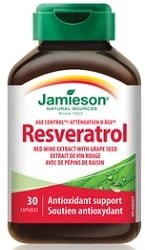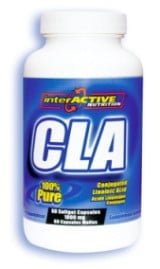You don’t just wake up one day with type 2 diabetes. In fact, this disease could be sneaking up on you even as you read this… and if you’ve noticed your belt feeling tighter these days, consider it proof positive of a steady, silent attack. That’s because a larger waistline could mean you have more visceral fat. And unlike the subcutaneous fat that’s stored under your skin, visceral fat builds around your internal organs, deep within your abdomen. Once there, it plays an active role in the production of inflammation-causing adipokines-a tendency that has linked this type of fat to increased risk of cancer, diabetes, and cardiovascular disease risks.1 In fact, visceral fat can raise your risk of type 2 diabetes five-fold.2 In one study of obese children, visceral fat trumped total fat as a significant cause of this condition.3 Unfortunately, visceral fat also is a key player in the development of metabolic syndrome, a frighteningly prevalent condition comprised of a cluster of abnormalities including elevated triglycerides, reduced HDL cholesterol, oxidized LDL cholesterol, hypertension, and elevated blood sugar. Research has revealed that it may actually be visceral fat-not insulin resistance, as once thought-that underlies the development of metabolic syndrome and its related heart risks in women.4 The solution to protecting yourself against the development of metabolic syndrome? Combining a proprietary extract of Glycyrrhiza glabra L root-standardized to the polyphenol flavonoid compound glabridin-along with Vitamin D3 can actually help put the brakes on this deadly trend. The proprietary extract of Glycyrrhiza glabra L. is called Glabrinex, and published studies of the main component of Glabrinex revealed that it can suppress abdominal fat accumulation and blood sugar elevation in diabetic mice.5 Another study showed the same ability in obese mice fed a high-fat diet.6 Randomized, double-blind, placebo-controlled human trials offer even more compelling support for this revolutionary compound, showing a significant suppression of weight gain in human subjects-accompanied by lowered body fat, especially around the abdomen.7 Of course, if you think a smaller waist provides all the protection you need, think again-as it turns out, there’s one more factor you simply can’t afford to ignore. In a study published just last month, researchers found that, out of more than 3,000 aging Chinese participants, 93 percent suffered from either vitamin D deficiency or insufficiency. What’s worse, the study also showed that patients with the lowest levels of vitamin D were more than twice as likely to have metabolic syndrome as those with the highest levels.8 The conclusion here is crystal clear: Reducing visceral fat may be a critical part of the fight against metabolic syndrome and one of its main metabolic consequences (high blood sugar leading to type 2 diabetes). Pairing Glabrinex with a quality vitamin D3 supplement-the most bioavailable form of this essential nutrient, other than the vitamin D produced in the skin by exposure to sunlight-can help slash your risk of developing the metabolic syndrome and aid in getting rid of those extra inches around the waist. References: 1.Phillips LK, Prins JB. The link between abdominal obesity and the metabolic syndrome. Curr Hypertens Rep. 2008 Apr;10(2):156-64. 2.Grundy SM. Metabolic Syndrome Pandemic. Arterioscler Thromb Vasc Biol. 2008 April; 28;629-36. 3.Druet C, Baltakse V, Chevenne D, Dorgeret S, Zaccaria I, Wang Y, Levy-Marchal C. Independent effect of visceral adipose tissue on metabolic syndrome in obese adolescents. Horm Res. 2008;70(1):22-8. 4.Phillips GB, Jing T, Heymsfield SB. Does insulin resistance, visceral adiposity, or a sex hormone alteration underlie the metabolic syndrome? Studies in women. Metabolism. 2008 Jun;57(6):838-44. 5.Aoki, F, Honda, S, Kishida, H, Kitano,M, Arai, N, Tanaka, H, Yokota, S, Nakagawa, K, Asakura, T, Nakai, Y, and Mae, T. Suppression by licorice flavonoids of abdominal fat accumulation and body weight gain in high-fat diet-induced obese C57BL/6J mice. Biosci Biotechnol Biochem. 2007;71(1):206-214. 6.Nakagawa, K, Kishida, H, Arai, N, Nishiyama, T, and Mae, T. Licorice flavonoids suppress abdominal fat accumulation and an increase in blood glucose level in obese KK-A mice. Biol Pharm Bull. 2004;27(11):1775-1778. 7.Tominaga Y, Mae T, Kitano M, Sakamoto Y, Ikematsu H, Nakagawa K. Licorice flavonoid oil effects body weight loss by reduction of body fat mass in overweight subjects. J Health Sci. 2006;52(6):672-683. 8.Lu L, Pan A, Hu FB, et. al. Plasma 25-hydroxyvitamin D concentration and metabolic syndrome among middle-aged and elderly Chinese. Diabetes Care. April 14, 2009. Published Online Ahead of Print.
Currency
CAD $
^
View by Category
Recently Viewed Products
-
 Resveratrol Red Wine Extract With Grape Seed (30 Capsules)
CAD $20.73
Resveratrol Red Wine Extract With Grape Seed (30 Capsules)
CAD $20.73
-
 Stress Therapy (60 Tabs) by NuLife *DISCONTINUED
CAD $34.95
Stress Therapy (60 Tabs) by NuLife *DISCONTINUED
CAD $34.95
-
 CLA 1000mg (60Capsules)
CAD $23.98
CLA 1000mg (60Capsules)
CAD $23.98
-
 Sandalwood Essential Oil -India (10mL)
CAD $113.27
Sandalwood Essential Oil -India (10mL)
CAD $113.27
-
 Eucalyptul Oil (1litre)
CAD $51.30
Eucalyptul Oil (1litre)
CAD $51.30
Subscribe to our newsletter
Receive our sales and expert advice in your inbox every week
